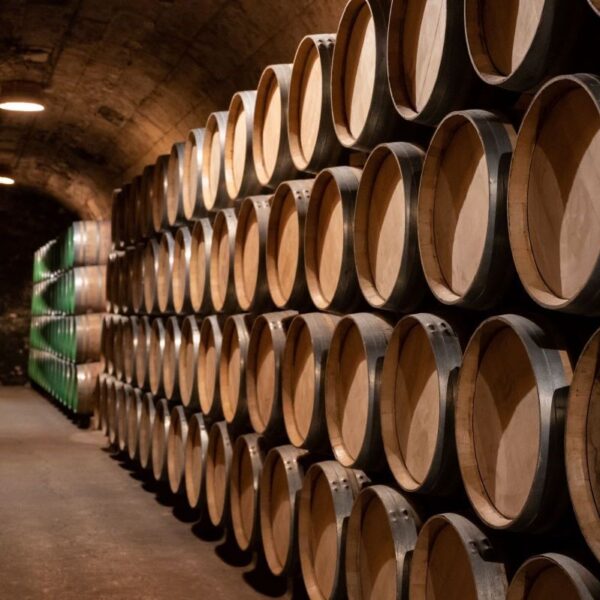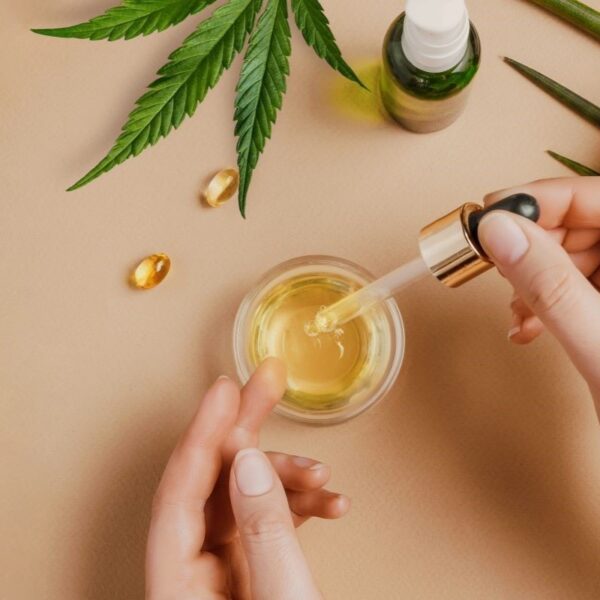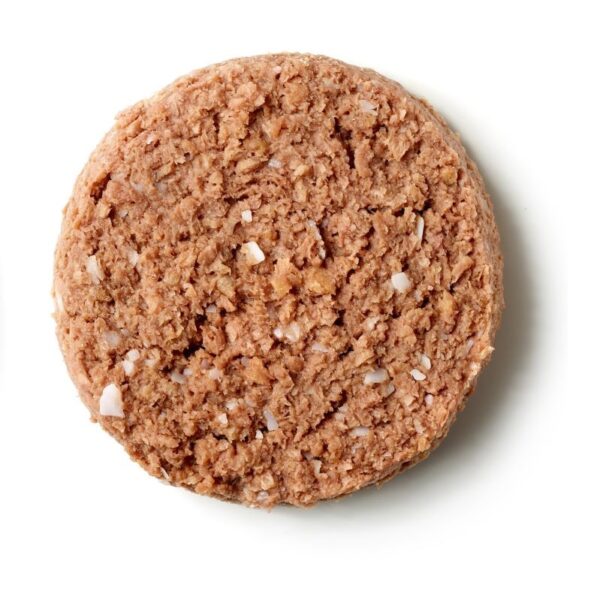Carrageenan is an extract from an edible red seaweed native to the British Isles called Irish Moss. For hundreds of years, people have used it in cooking. Today, it’s a popular choice as a thickener and gelling agent in the food industry.
There’s some confusion around its use and safety because there are various types of carrageenan, and not all are food-safe. This article aims to provide essential information about carrageenan, including its functions and applications in food and beverage products.
What is Carrageenan?
Carrageenan is a hydrophilic colloid (a water-soluble gum). In numerous red seaweed (Rhodophyta) species, it serves a structural function similar to that of cellulose in land plants. Chemically, carrageenans are sulphated linear polysaccharides of D-galactose and 3,6-anhydro-D-galactose. They’re composed of repeating galactose units and are a source of dietary fiber.
Food Grade vs. Degraded Carrageenan
There are two main types of carrageenan. They have different chemical properties and differ in their molecular weight: degraded and undegraded. It’s important to note the distinction between these two types since degraded carrageenan is a possible human carcinogen not approved for use in food products. Food-grade carrageenan is undegraded. (Degraded carrageenan is also referred to as poligeenan.)
How is Carrageenan Produced?
Carrageenan is obtained easily from seaweeds using a hot-alkaline water extraction technique and then purified. There are multiple polymeric forms of carrageenan. Kappa, lambda, and iota are primarily used in the food industry.
Stability of Carrageenan
Carrageenan is stable at neutral or alkaline pHs. However, their stability decreases at lower pHs, especially at high temperatures.
| Attribute | Stability |
|---|---|
| Heat | Found to be stable at 115 °C |
| Light | Stable |
| Oxidative | Stable |
| pH | >pH 3.8, Stable in Alkaline pH |
Carrageenan as an Alternative to Other Hydrocolloids
Carrageenan is a clean-label friendly, vegan, GMO-free, and sustainable alternative to animal-based gelling agents such as gelatin. Carrageenan is a gelling agent of choice of food manufacturers due to its effectiveness and the fact that it doesn’t affect the color or taste of food products.
Carrageenans differ significantly from the other two classes of commercial seaweed-based hydrocolloids: agars and alginates. Due to their half-ester sulfate moieties, carrageenans are strongly anionic polymers. Though agars are galactans, they have little half-ester sulfate and are considered nonionic for most practical purposes. Alginates are anionic polymers of mannuronic and guluronic acids with carboxyl rather than sulfate groups. Additionally, unlike agar-agar, the thickening obtained from the use of carrageenan is reversible.
Unlike other hydrocolloids, carrageenan can interact with milk proteins. For this reason, it’s an efficient ingredient for stabilizing and gelling milk products.
Applications in Food and Beverage Products
Carrageenan is a truly versatile and useful food ingredient that performs several functions in foods and beverages.
- Thickener
- Stabilizer
- Emulsifier
- Fiber Source
- Gelling Agent
- Coating Agent
Product Examples
Carrageenan is used in various food products, including dairy products, beverages, sauces, and processed meats. The following table describes typical applications of carrageenan in food products.
| Type | Examples | Carrageenan Type | Role/ Function |
|---|---|---|---|
| Dairy | Desserts, Ice Cream, Cream, Milkshakes, Yogurts, Salad Dressings, Sweetened Condensed Milks, Skimmed Milk, Filled Milk, Milk Gel, Whipped Cream and Products, Shakes | λ | Stability, control meltdown, bodying, thickening and gelation, preventing crystallization of sugar |
| Confectionery | Chocolates, Chocolate Products | κ & λ | Preventing crystallization of sugar |
| Bakery | Cake Icings, Tart Fillings, Bread Dough | ι & κ | Thickening, Gelation, Viscosity modification |
| Infant Formulations | Infant Formulas | ι & κ | Emulsion, fat, and protein stabilization |
| Beverages | Alcoholic Beverages (Beer, Wine, etc.), Fruit Juice, Vinegars, Chocolate Milk, Syrups, Powdered Fruit Juices, Diet Shakes | κ | Gelling agent and fat stabilization, for smooth texture, emulsifier, stabilizer, and thickener |
| Meat, Fish & Poultry | Fish Gels and Processed Meat, Cooked Ham, Imitation Meat, Sausages, Canned Meat, Hamburgers, Pureed Meat, Poultry, Processed Meat | ι & κ | Substitute for fat, increases water retention, increases volume, or improves slicing by gelation |
Properties of Carrageenan
| Molecular Weight | 30 kDa to 5,000 kDa |
| Viscosity | Varies from 5 to 800 cps (1.5% solution at 75º C) |
| Melting point | 50 to 70ºC |
| Gelling Temperature | 62 to 75°C |
| Tg (Glass Transition Temperature) | 83.15°C |
| Density | 1.37 g/cm3 |
| Storage Conditions | Dry, cool and ventilated area (<40º C) |
| Physical Form | Powder |
| Color | White |
| Claims (*Product Specific) | Non-GMO, Clean label friendly, Vegan, *Organic, *Halal, *Kosher |
Gummies
Carrageenan is used as an efficient alternative to gelatin in gummy formulation. It is vegan and provides sensory characteristics similar to gummies formulated with gelatin in terms of resilience, firmness, and texture.
Here is an example of a gummie formulation table with carrageenan along with the % weight of ingredients:
| Ingredient | % Composition |
|---|---|
| Glucose Syrup | 45 |
| Water | 19.3 |
| Sucrose | 30 |
| Carrageenan | 2.5 |
| Gellan Gum | 0.5 |
| Citric Acid | 1.3 |
| Sodium Citrate | 1.3 |
Fruit Jam
κ-carrageenan is used as a stabilizer and thickener in honey pineapple jam.
Here is an example of a fruit jam formulation table with carrageenan along with the % weight of ingredients:
| Ingredient | % Composition |
|---|---|
| Honey Pineapple Pulp | 80 |
| Sugar | 20 |
| Carrageenan | 0.5 |
Patties (Reduced Fat)
Formulation of low-fat chevon patties incorporated with carrageenan has shown a significant reduction (~30%) in the fat content of the final product with comparable sensory properties.
Here is an example of a patty formulation table with {chemical name} along with the % weight of ingredients:
| Ingredient | % Composition |
|---|---|
| Lean Goat Meat | 70 |
| Refined Vegetable Oil | 5 |
| Ice Flakes | 6 |
| Salt | 1.6 |
| Dry Spice Mix | 2 |
| Condiments | 3 |
| Refined Wheat Flour | 3 |
| STTP | 0.4 |
| Carrageenan | 0.9 |
| Water | 4.1 |
Effects of Carrageenan on Food Products
Carrageenan is unique as a gelling agent – its effects on food are limited to intended ones. When formulating a food product with carrageenan, you can expect the following:
Effects on Sensory Properties
Carrageenan is highly effective as a gelling agent in jellies, jam, and gummies. It increases the chewiness and hardness of food products and positively affects resilience. The dosage of carrageenan can be optimized to obtain the desired sensory profile in terms of texture and mouthfeel of the food products. Carrageenan has no peculiar taste and can be easily used with food products of any inherent taste. Carrageenan can be used to mask bitterness in certain food products.
Effects on Functional Properties
Carrageenan develops a shear-thinning thixotropic gel, which can be easily poured after shaking. The presence of calcium ions is required to establish the gel network.
Carrageenan acts as a stabilizer in biphasic systems, increasing the system’s viscosity and decreasing its components’ mobility. It reduces the likelihood of phase separation and maintains the stability of the product. It also acts as a clouding agent in foods where clouding is desirable. Additionally, carrageenan helps suspend the insoluble components in water-based systems and prevents them from settling down.
Effects on Nutritional Properties
Carrageenan has a few nutritional properties that make it desirable as a food additive. Carrageenan as a food additive is also effective in bringing out change in the nutritional properties of food.
Fat Replacement
Carrageenan is commonly incorporated into low-fat formulations in products like meat products, meat alternatives, and dairy alternatives such as soy milk and almond milk. It acts as an efficient hydrocolloid and improves the textural characteristics of the product by decreasing toughness and increasing juiciness. Typically, these sensory attributes are achieved by including fat.
Fiber Source
Technically, carrageenan is a dietary fiber since it’s not digested in the intestine. It also supports the growth of healthy gut microflora. For this reason, it’s often consumed as a prebiotic.
Sodium Reduction
Carrageenan can be used to reduce the sodium content of food products. It also helps retain moisture and texture, keeping products from drying out and crumbling.
Carrageenan Formulation Considerations
The type of gel formed by carrageenan depends on how the raw material is refined, the dominant polymer in the mixture, and the cation used to induce gelation during heating. The functional characteristics of gel formed by carrageenan are affected by multiple factors:
Source
The seaweeds used for carrageenan production include Chondrus crispus, C. ocellatus, Gigartina stellata, G. acicularis, G. pistillata, G. canaliculata, G. chamissoi, G. radula (also known as Iridea species), G. skottsbergii, Gymnogongrus furcellatus, Eucheuma cottonii, E. spinosum, E. gelatinae, Furcellaria fastigiata, Hypnea musciformis, and H. spicifera. The carrageenan obtained from each source differs in terms of chemistry (dominant polymer), % esterification, and purity, all of which ultimately affect its functionality.
Chemistry
The ester sulfate content of carrageenan affects the gelling properties of the product. Carrageenan with a lower ester sulfate content will form a stronger, more elastic gel with a higher melting point and a slower melting rate. Conversely, carrageenan with a higher ester sulfate content will form a weaker, less elastic gel with a shorter melting point and a faster melting rate. As the ester sulfate content decreases, the gel becomes firmer, more elastic, and more resistant to breakdown by heat or shear. Carrageenan may also be combined with sodium and potassium and used as a food additive as a salt of carrageenan. Salts of carrageenan are freely soluble in water even at lower temperatures.
Polymeric Forms
Carrageenan is a gum complex. In it, mixture of different polymers of which κ, ι, λ, θ, µ, ν, ξ, α, β, ω, ο, π, γ, δ and ψ have been identified. The main difference among subtypes is structural — specifically the degree of substitution (DS) of the sulfate group, the position of the ester sulfate groups, and the presence or absence of anhydrogalactose units. The functional properties of these forms of carrageenan differ extensively. The main forms used in the food industry are kappa, lambda, and iota.
λ-Carrageenan (lambda-carrageenan) is a nongelling polymer containing about 35% ester sulfate by weight and no 3,6- anhydro galactose.
ι-Carrageenan (iota-carrageenan) is a gelling polymer containing about 32% ester sulfate by weight and approximately 30% 3,6- anhydrogalactose.
κ-Carrageenan (kappa-carrageenan) is a strongly gelling polymer that has a helical tertiary structure that allows gelling. It contains 25% ester sulfate by weight and approximately 34% 3,6- anhydrogalactose.
Carrageenan Formulation Phases
| Property | κ-Carrageenan | ι-Carrageenan | λ-Carrageenan |
|---|---|---|---|
| Solubility in water @ 80°C | Yes | Yes | Yes |
| Solubility in water @ 20°C | Sodium salt only | Sodium salt only | Yes |
| Gelation | |||
| Ions Necessary | K+ | Ca2+ | No gelation |
| Texture | Brittle | Elastic | No gelation |
| Re-gelling | No | Yes | No |
| Acid Stability | >pH 3.8 | >pH 3.8 | >pH 3.8 |
| Syneresis | Yes | No | No |
| Freeze-Thaw Stability | No | Yes | Yes |
| Synergism with other gums | Yes | No | No |
Dosage
The typical dosage of carrageenan in food items varies depending on the type of carrageenan used, the food product, and the desired result. Generally, the carrageenan used is between 0.1% and 0.5% by weight. For example, ice cream typically contains between 0.1% and 0.2% carrageenan, while jelly typically contains 0.3% and 0.5% carrageenan.
Carrageenan Safety & Regulatory Considerations
Carrageenan is recognized by the U.S. Food and Drug Administration (FDA) as permitted for use in food for human consumption and has been proven safe and effective for use in foods by decades of rigorous scientific study and human consumption. As per the US FDA, the following species can be used for aqueous carrageenan extraction. They are Chondrus crispus, Chondrus ocellatus, Eucheuma cottonii, Eucheuma spinosum, Gigartina acicularis, Gigartina radula, Gigartina stellata, and Gigartina pistillata. As per specifications by the EU, carrageenan should not contain more than 5% content of less than 50 kDa.
Regulatory authorities in every region of the world, including the United States, Europe, China, Japan, and Brazil, have found carrageenan safe for use in food. Carrageenan has been confirmed safe by the World Health Organization (WHO), the Joint Food and Agriculture Organization/WHO Expert Committee on Food Additives (JECFA), the International Agency for Research on Cancer, and the FDA.
Carrageenan is on the U.S. Food and Drug Administration (FDA) list of “Generally Recognized as Safe” (GRAS) food additives. It is permitted in infant formula and is the only stabilizing ingredient used in liquid organic infant formula.
Additional Sources & Resources
- CFR – Code of Federal Regulations Title 21
- FAO – PRODUCTION, PROPERTIES AND USES OF CARRAGEENAN
- Wuxuwang
- ResearchGate – Properties and Applications of Gelatin, Pectin, and Carrageenan Gels
- JPS – Effects of Reaction Temperature on the Synthesis and Thermal Properties of Carrageenan Ester
- Agargel – CARRAGEENAN







